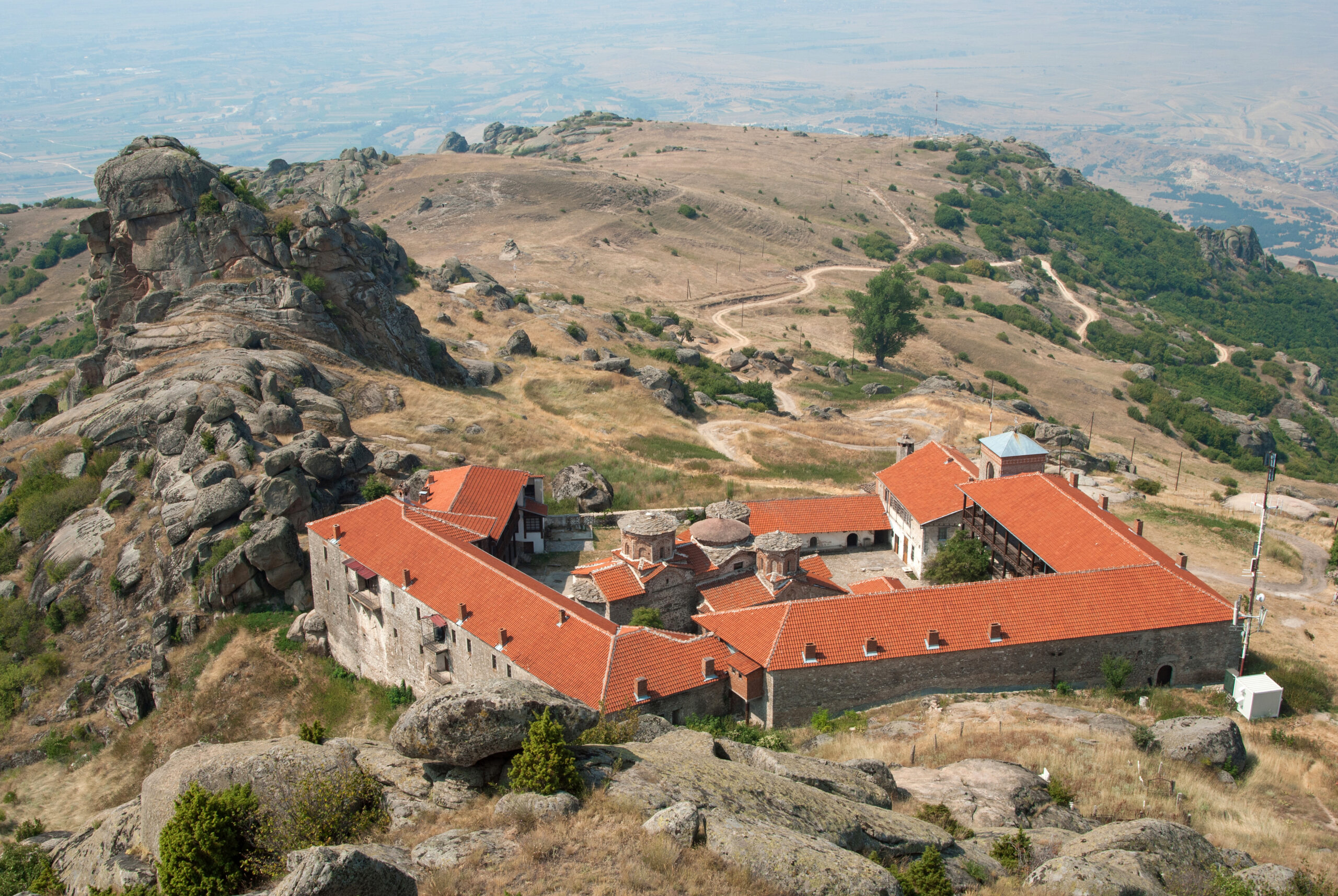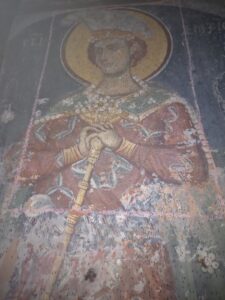
- Christian Heritage in North Macedonia
Macedonia is a holy land that is mentioned a number of times in the Bible and preserved there are some of the oldest and most important medieval churches and monasteries in Eastern Christianity, or the so-called “Byzantine world”. In their interior, these sacred shrines house wonderful fresco paintings, which, together with the frescoes in Kosovo, are regarded by scholars as some of the most important works of fine art aside from Giotto in medieval Europe.
An important part of this exclusive Macedonian heritage can be found in North Macedonia. Here, the fresco paintings in the medieval churches were painted from the eleventh to the fifteenth century and have so far represented a well preserved cultural register unique by its historical, aesthetic and stylistic values.
Unfortunately, due to poor management, lack of policy and the constant never-ending political turmoil in the country, Macedonian churches and their wonderful frescoes are under serious threat.
- Ownership, maintenance and conservation of Macedonian sacred heritage
Today in North Macedonia the churches and monasteries belong to the Macedonian Orthodox Church which is the legal owner of the Christian Orthodox heritage in the country. However, according to the current law, the government is responsible for the conservation of all the listed churches and monasteries, which include the totality of the medieval sacred sites. The Macedonian Orthodox Church is responsible only for the maintenance of the sites it owns. Since the distinction between conservation and maintenance is often hard to make, this regulation causes confusion and results in negligence of the sites. As for the conservation of listed sacred sites, it is run by a complex system of six national conservation agencies and one central agency without a clearly defined hierarchy, which complicates even further the conservation task. On the other hand, there is no priority list of sacred medieval sites in need of conservation as they seem to be all equal by their cultural significance according to the current law. On top of this, we should mention the lack of trained professionals, particularly architects specialized in heritage preservation and fresco conservators, which is a serious setback in conservation planning and practice.
To conclude, the country has an inept and inefficient conservation system that has serious difficulties in preserving national heritage, especially the most valuable, but also the most vulnerable part of it which are the medieval churches and monasteries.
As a consequence the cultural heritage, especially the sacred heritage is neglected, unprotected and badly preserved. So, it is no wonder that the Turkish National Agency for Development called TIKA, has taken the conservation of Ottoman mosques in the country into its own hands with a vast conservation project sponsored by the Turkish government. The Macedonian government welcomes this project as the conservation of sacred sites is often seen by local politicians as a burden rather than an asset for the promotion of the country and its development. Unfortunately, this is not the case with the conservation of Macedonia’s medieval churches and monasteries – neither the Macedonian Orthodox Church nor the Governmental agencies for conservation, not even the local communities which lack the know-how for conservation of Byzantine churches, are able or willing to get involved in the conservation of this valuable heritage. And, in spite of all of our efforts to get help for the conservation of these churches from our European partners and peers, so far these efforts have brought no results. Nobody cares enough to get involved…
- Macedonian Churches in Peril – a few alarming examples and a cry for help
Due to all of the above mentioned unfortunate circumstances, a number of very significant churches in the country are left to decay and are in desperate condition. Here we shall mention the case of the most important monument in the Western civilization from the 11th century, the church of St Sophia in Ohrid which is now also used as a stage for concerts and cultural events. The exonarthex added to the church in the 14th century and decorated with a unique fresco ensemble has been closed to the public for years and is now used as a depot for all kinds of debris from the stage. The frescoes are in desperate condition, despite the fact that the city of Ohrid is a protected UNESCO World Heritage Site.
Another example is the monastery of Treskavec in the central part of the country overlooking the Pelagonia plateau with its impressive church dedicated to the Dormition of the Holy Mother of God dating from the 14th century. The church, albeit unique by its architectural and iconographical features, has been neglected for years and is in a very bad condition both in the interior as well as structurally. Just recently the frescoes of this valuable church have been attacked by insects and we do not know how to get rid of them without damaging the frescoes…
Just like the Egyptian pyramids have marked the valley of the Nile, or the imperial Roman buildings have determined the features and the image of the city of Rome for all times, the Macedonian monasteries with their wonderfully decorated churches scattered on the hills and mountains around the country have shaped the landscape of Macedonia for all time. Without this most emblematic cultural imprint, the country will never be the same and it will lose for good its image and its soul.
Please help us preserve this valuable world heritage for posterity.
Pance Velkov, President of the Makedonida Foundation, Skopje, North Macedonia 2021
Photos by Pance Velkov

The insect infestation on the 15th-century fresco of St. Demetrius in the Treskavec Monastery





Follow us: